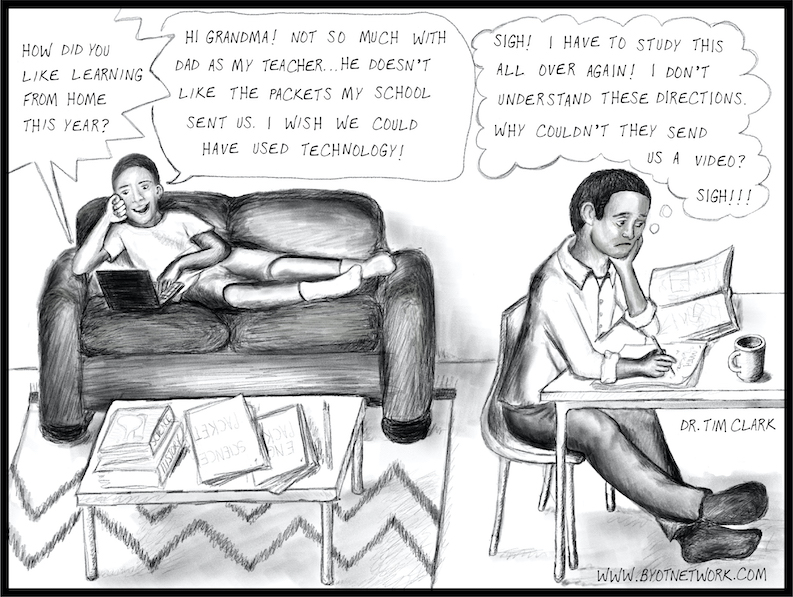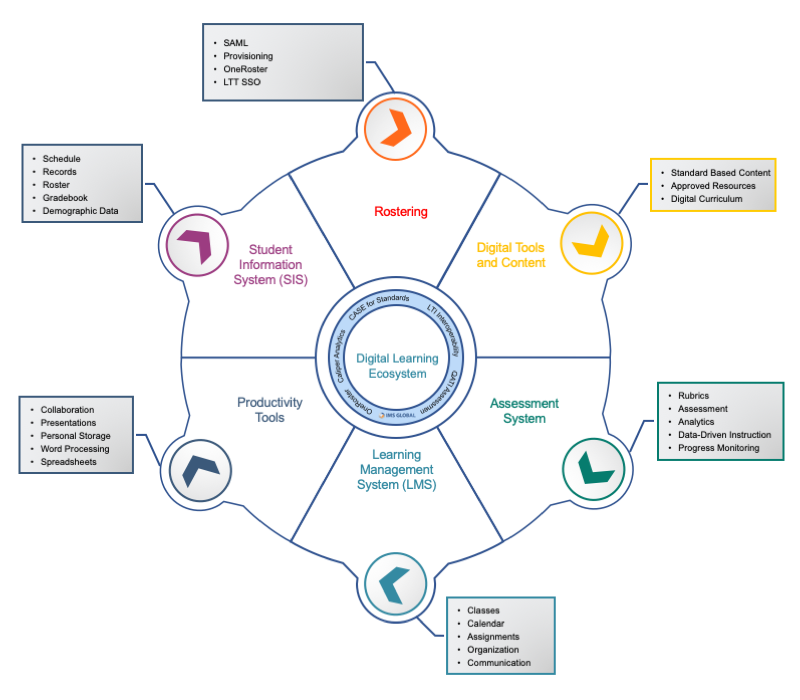 Rob Abel, Ed.D. | August 2020
Rob Abel, Ed.D. | August 2020
"Together, we are going to a brand new home" —Cynthia Erivo
This month I am focusing on learner agency—the second of 1EdTech's repositioning to a new way of thinking about student success from now on by improving equity, agency, and mastery. Last month, I discussed equity, which isn't about giving every student the same experience, but rather about providing the diversity of experiences that meet learners' needs.
Similarly, agency is about meeting students where they are and helping toward where they would like to go—creating a pathway to success. It's where motivations and interests intersect with opportunities. It's about the empowerment that comes with an expectation that one can chart a course in life.
Isn't it a beautiful vision for our educational systems that the educational process helps every individual find their place in the world?
Every person deserves a place in this world and can have a unique impact on making this world a better place. But finding one's place in the world is a daunting process that lasts a lifetime.
Can educational systems be designed to help develop this sort of agency in a person?
Our educational systems worldwide are already impacting hundreds of millions of lives every day. And the passion of faculty, teachers, staff, and administrators to shape lives positively is a beautiful thing already. Yet, we know that learner agency can benefit from more authentic educational experiences that help build a learner's sense of accomplishment, empowerment, and perhaps even address the challenges relevant to their everyday lives. This is not a new concept. Experiential learning has been endorsed by a wide range of educational innovators, from John Dewey to Paulo Freire, and repeatedly reiterated in studies that learning by doing creates greater retention, transfer, and metacognition.
As we think about adding more experiential learning, we grapple with the historical design of predominant educational and employment systems worldwide. The current systems are largely designed to suit the industrial age, even though, according to economists and philosophers, we are already in a post-industrial society, where knowledge has a higher value than production.
It is daunting to even think about how we transform the predominant educational models from being focused on sorting and stratifying students to focusing on developing each individual's talents and strengths. It's not only that developing useful skills is gaining importance in the return on investment from education, but also the fundamental substrate of what it means to be educated needs evolution. For example, shouldn't the liberal arts be evolving rapidly to meet the changing needs of society?
It is also extremely challenging to help young people find their place in the world when the world is so complex, and they are just beginning to learn about it. For many, the degree of agency and motivation in learning is directly connected with the actual opportunities that are at hand. Thus, better educational experiences and better clarity of how that education connects to real opportunity are two sides of the same coin.
No doubt, these are some daunting challenges that aren't as easy to solve as creating a set of academic learning standards and assessing a student's ability to perform on them. Or by simply adding more "career days" into the curriculum.
The good news is that we are already seeing the beginnings of the changes across K-12, HED, and corporate learning that guide us as to how to evolve to a world where opportunity and empowerment lead to more effective student agency and achievement on a broader scale. We should not kid ourselves that this is going to happen overnight. But, as usual, the changes are occurring among the most motivated stakeholders. The motivation might be pure belief and conviction. Or, it might be very pragmatic—like filling gaps in employment or college application pipelines. Or it might be both together. If you are in K-12, HED, or corporate learning, you probably see examples. In 1EdTech, we are seeing many such as those discussed at our Digital Credentials Summit in February. This is very exciting! It's a time when innovation in new models is being appreciated that can directly connect learners to better opportunities—and the COVID-19 pandemic has made the need even more apparent as we more closely examine educational experiences, cost, and outcomes.
We have been working, along with our many partners, on enabling a connected infrastructure that encourages both sides of the agency/opportunity coin. While it is impossible to predict the many ways that innovative educational models will evolve, we in 1EdTech believe that there is a common foundation that is an obvious way to begin connecting educational models, opportunities, and lifelong learner agency. Simply put, we are finding broad agreement among educational and corporate leaders that we must get better at representing the full depth and breadth of student achievement and skills across all sources in a way that can be curated by individuals and connected to the dynamic market of opportunities. Learners have a story to tell, their own, and need a better way to do it. Educational systems can aid this process by validating a greater breadth and depth of achievement.
There's been much exciting news in the last year or so about interest in a better record of learning by various names such as the interoperable learning record (ILR) or the learning and employment record (LER). And, of course, there has been a lot of excitement about how blockchain might be used as the immutable distributed ledger underlying such records. Thanks to the good work of 1EdTech members, our community anticipated these needs and is at the forefront of providing the foundation for the connected infrastructure with the combination of the 1EdTech Comprehensive Learner Record (CLR) and Open Badges (initially created by Mozilla Foundation and now improved by 1EdTech members including Mozilla). Open Badges can be incorporated as verifiable achievements from numerous sources into the CLR. AACRAO recently recommended adopting the 1EdTech CLR standard, and we are partnering to help higher education institutions across a broad range of needs through a series of public CLR roundtable discussions. Open Badges are being adopted in exciting ways in formal and informal education and corporations of all sizes. 1EdTech is also working with our K-12 state and district members (via the Partnership for Interoperable Versatile and Open Transcript or PIVOT Project) on some very innovative things.
Next month I will tie together the three focus areas for defining student success of the future while adding mastery into the mix. Till then, I hope the same determination, skill, and empathy that is getting us all through an unprecedented "back to school" can be leveraged in the future to get us to a brand new home—where our educational and employment systems work better together to help every individual better find their place in this world.





